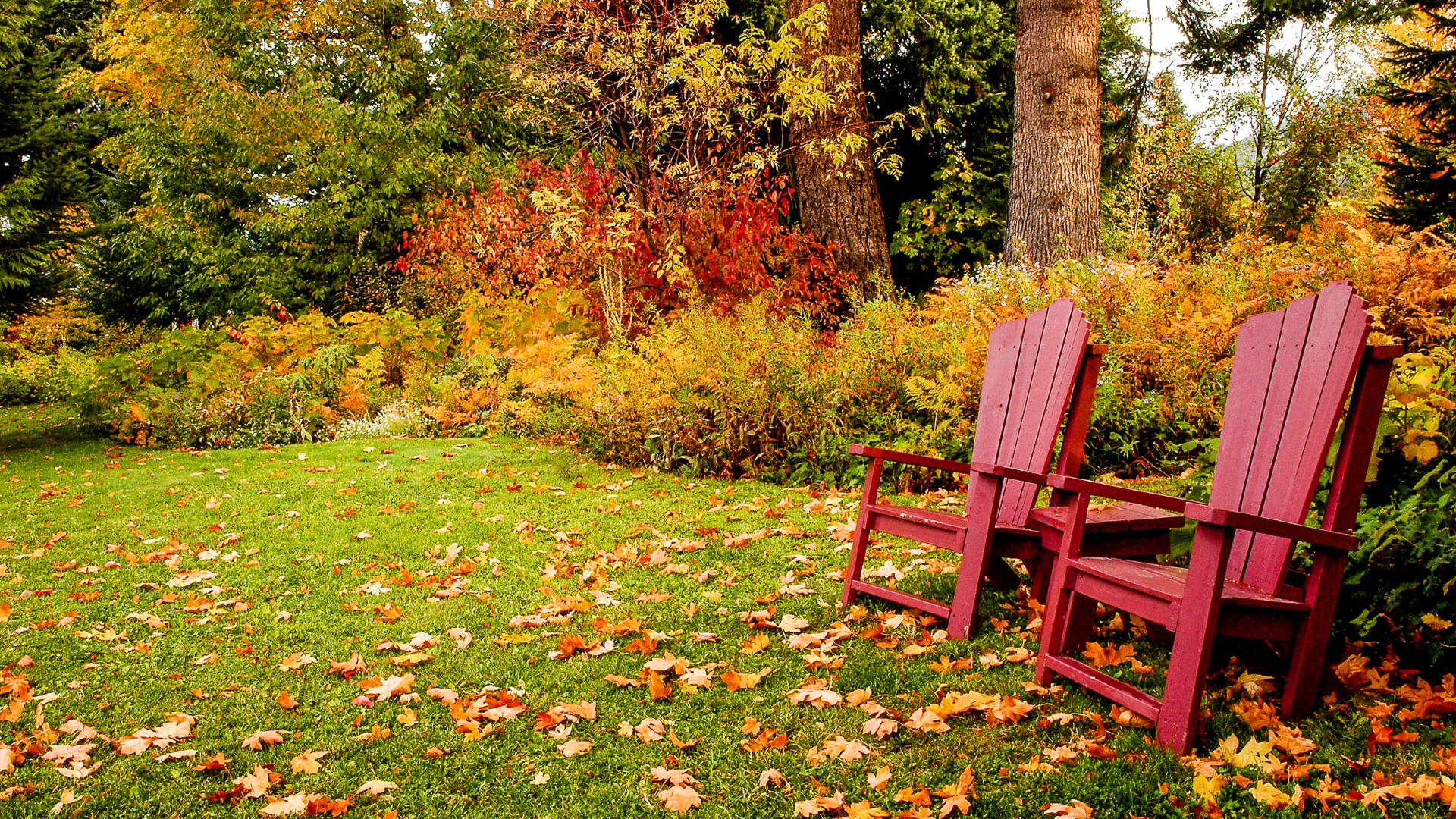We’re well into fall, and as I look outside in the yard, the message is very clear: November is the last chance to get your garden and yard systems set for winter and the possible freezes, and the last chance to prune, to clear, to plant, and to spray. Here are all the gardening tasks you should do in November.
Plant new trees, shrubs, and bulbs
Fall has an exquisite sweet spot for planting. It’s been raining, so the ground is soft and easy to manipulate—up until it freezes. Get those new trees, shrubs, and perennials like bulbs and low lying flowers into the ground now. Mulch them well, giving the ground around the new plants a few inches of wood chips or leaves, but make sure to clear around the trunk itself.
Conversely, if you’re going to pull out your dahlia and begonia tubers for the winter, take the time to do so now. Both bulbs are winter hardy to a point, but there’s always a risk with a hard freeze that you’ll lose some of them. Given how precious these tubers are, many people dig them up, dust them off, and store them in a cool garage all winter.
Get planters into place
With the garden going dormant for winter, it’s nice to have some color around the joint, and planters are a great way to do that. There are winter annuals like pansies, dusty miller, flowering kale, and even herbs. They won’t last all winter, but they will make your front porch a little more inviting for holiday guests.
Clear garden beds
If you’ve been a little lax this year (I have) on getting garden beds cleared from the summer, it’s time to get to work. First, pull anything that’s edible. Time to make some kitchen sink pasta sauce (I throw any and all vegetables left into it). Then start chopping the plants down, leaving the roots in place to compost over the winter. Those tall plants become threats once they get heavy from ice and are waving in the wind. Clear what’s above the soil line, then compost and mulch the beds for winter. Consider cover crops if you want, but get them in now. It’s too late for anything else except maybe kale, and I strongly believe there’s already too much kale in the world. Make sure you pull all the weeds so they don’t have a chance to grow root systems or drop seeds.
Prune dormant summer trees
The rule with pruning is that you wait for when the plant is dormant, which usually is the season after they flower. For summer flowering or fruiting trees, it’s go time, but be sure to pick a dry day, not when it’s damp or wet out, which encourages viruses and fungi. Without leaves, you get visibility on the branch structure of the tree so you can identify which branches are aiming anyplace but up and out and cut them down. If a branch crosses another, it’s gotta go. You want an upright, open structure. Those cuts are going to heal better this time of year; you want to ensure the pruning is done before early spring when the trees start to grow again.
Spray plants that have fungal issues or pests
At this point, you should not be fertilizing anything. This encourages new growth, which we don’t want as we’re in dormant season. New growth would be particularly susceptible to the wind and cold. What you may want to consider is treatment sprays for plants that have fungal issues or pests. This is called “dormant spraying,” and it simply means we’re spraying while the plant is dormant to prevent issues. If you have a stone fruit tree with leaf curl, you may spray it with copper fungicide, for instance. Your nursery can help with figuring out what’s needed for your particular issue and if a topical spray will help. For some pest-related issues, there are topical sprays as well. Again, your nursery is the best place to get a diagnosis and treatment plan.
Winterize your sprinkler or irrigation system
If you haven’t drained your sprinkler, drip, or irrigation system and you live where there’s a threat of a freeze, get to it. Drain and put the hoses away, cover the spigots, and get the tools, trellises and other gardening gear stored away.
Leave the lawn alone
If you haven’t stopped mowing, stop now. Stop watering and fertilizing and seeding; the lawn should go into a dormant state for the winter.
